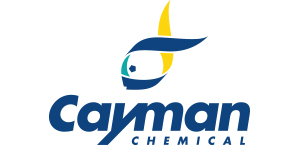N-(β-ketocaproyl)-L-Homoserine lactone, CAS 143537-62-6
N-(β-ketocaproyl)-L-Homoserine lactone, CAS 143537-62-6
SKU
CAY10011207-25
Packaging Unit
25 mg
Manufacturer
Cayman Chemical
Availability:
loading...
Price is loading...
Shelf life (days): 1460.0
Formulation: A crystalline solid
Formal Name: 3-oxo-N-[(3S)-tetrahydro-2-oxo-3-furanyl]-hexanamide
Purity: ≥95%
Formula Markup: C10H15NO4
Formula Weight: 213.2
CAS Number: 143537-62-6
Notes: Quorum sensing is a regulatory system used by bacteria for controlling gene expression in response to increasing cell density.{15370} This regulatory process manifests itself with a variety of phenotypes including biofilm formation and virulence factor production.{13434} Coordinated gene expression is achieved by the production, release, and detection of small diffusible signal molecules called autoinducers. The N-acylated homoserine lactones (AHLs) comprise one such class of autoinducers, each of which generally consists of a fatty acid coupled with homoserine lactone (HSL). Regulation of bacterial quorum sensing signaling systems to inhibit pathogenesis represents a new approach to antimicrobial therapy in the treatment of infectious diseases.{15369} AHLs vary in acyl group length (C4-C18), in the substitution of C3 (hydrogen, hydroxyl, or oxo group), and in the presence or absence of one or more carbon-carbon double bonds in the fatty acid chain. These differences confer signal specificity through the affinity of transcriptional regulators of the LuxR family.{15398} In one of the most-studied quorum-sensing systems in gram-negative bacteria, the LuxI AHL synthase catalyzes the production of N-(β-ketocaproyl)-L-homoserine lactone (N-(β-ketocaproyl)-L-HSL) utilizing S-adenosylmethionine and hexanoyl-acyl carrier protein as reaction substrates in the marine bioluminescence bacterium V. fischeri.{16881} At increased populations of the bacteria, localized higher concentrations of N-(β-ketocaproyl)-L-HSL, an endogenous ligand to transcriptional factor LuxR, leads to increased production of both the AHL synthase and proteins responsible for bioluminescence.{15370} Numerous other species of bacteria also employ N-(β-ketocaproyl)-L-HSL in cell-to-cell communication.{16800,15932,16767,15399}
Formulation: A crystalline solid
Formal Name: 3-oxo-N-[(3S)-tetrahydro-2-oxo-3-furanyl]-hexanamide
Purity: ≥95%
Formula Markup: C10H15NO4
Formula Weight: 213.2
CAS Number: 143537-62-6
Notes: Quorum sensing is a regulatory system used by bacteria for controlling gene expression in response to increasing cell density.{15370} This regulatory process manifests itself with a variety of phenotypes including biofilm formation and virulence factor production.{13434} Coordinated gene expression is achieved by the production, release, and detection of small diffusible signal molecules called autoinducers. The N-acylated homoserine lactones (AHLs) comprise one such class of autoinducers, each of which generally consists of a fatty acid coupled with homoserine lactone (HSL). Regulation of bacterial quorum sensing signaling systems to inhibit pathogenesis represents a new approach to antimicrobial therapy in the treatment of infectious diseases.{15369} AHLs vary in acyl group length (C4-C18), in the substitution of C3 (hydrogen, hydroxyl, or oxo group), and in the presence or absence of one or more carbon-carbon double bonds in the fatty acid chain. These differences confer signal specificity through the affinity of transcriptional regulators of the LuxR family.{15398} In one of the most-studied quorum-sensing systems in gram-negative bacteria, the LuxI AHL synthase catalyzes the production of N-(β-ketocaproyl)-L-homoserine lactone (N-(β-ketocaproyl)-L-HSL) utilizing S-adenosylmethionine and hexanoyl-acyl carrier protein as reaction substrates in the marine bioluminescence bacterium V. fischeri.{16881} At increased populations of the bacteria, localized higher concentrations of N-(β-ketocaproyl)-L-HSL, an endogenous ligand to transcriptional factor LuxR, leads to increased production of both the AHL synthase and proteins responsible for bioluminescence.{15370} Numerous other species of bacteria also employ N-(β-ketocaproyl)-L-HSL in cell-to-cell communication.{16800,15932,16767,15399}

 Deutsch
Deutsch










